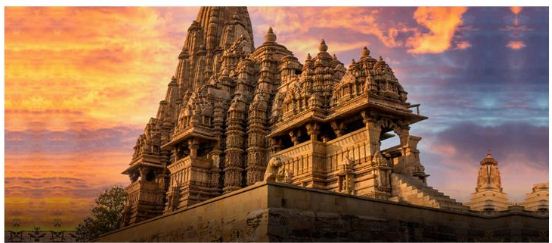Munaza Kazmi
Magical wells, Spectacular Jain temples, Gigantic sand dunes hiding several exotic tales, wow…sounds like “Ali Baba and Forty Thieves”. I believe readers could only imagine theses enchanted tales in Arabian nights story books but never heard or thought of those in real world. For living your imaginations Come with me to a mesmerizing journey of magical and undiscovered lands of Pakistan.
Pakistan is not just about the mountains and streams like my friends think it’s far much interesting, full of mysterious stories, adventurous and yeah beautiful indeed.

Nagarparkar is home to almost 200,000 inhabitants, who mostly belong to modest backgrounds. The town is majorly inhabited by Hindus, who have historically lived in harmony with the Muslim minority. In fact, the famous temples of the area make it mostly a town of the Hindus and Muslim pilgrims who visit each year to perform religious rituals or attend meals at the local shrines.
In the past Nagarparkar was largely populated by Yogis and Jain Munis, the followers of Lord Mahavira and Parsanatha, some hundreds of years ago. These Jains and Shaivites were known to practice austerities in the hills of Karunjhar.
Stories from the localsrelate that wealthy Hindu merchantsbuilt temples and dedicated them to Lord Parshwanath, the 23rd Jain prophet. But with hardly any Jains left, these major archaeological monuments lie abandoned, neglected and shrouded in mystery.
Jain Temple
Apart from the golden sand, exotic wild life and rich mineral reserves, Nagarparkaris famous for the Jain history and their remarkable architecture.There are over twelve Jain temples that you can find in the area. These dates back to as far as the 14th century – the era when the Jain architectural expression was at its ultimate – and are now one of the oldest heritage sites of Pakistan. Some of the notable shrines include; Karoonjar Jain, Virvah Jain, Gori and a cluster of three temples at Bodhesar etc. These are richly decorated with sculptures and paintings.
The carvings on the pillars and entrances of these temples are magnificent for their intricacy. One of these sanctuaries is believed to have been built by a Jain woman and is locally called, Poni Daharo. The walls of these abandoned buildings are geometric steps of marble — a particular style that shows up everywhere from the temple’s steps to the frames carved inside some of its walls and are widely seen among Jain constructions.
The canopies at the entrance of these temples are decorated with paintings that represent Jain mythology. It is believed that the frescoes at Gori temple are some of the oldest Jain frescoes in existence. Unfortunately, not much has been done to conserve these heritage sites and you would find some are merely ruins of what were once considered architectural wonders. I believe we should not leave everything on government since this heritage is belong to the citizens as well, we our self could preserve our precious heritage for the coming generations.
Bhodesar Mosque
Going furtheralongside the pond at the foothill of the Karunjhar you would discover a beautiful, shining white mosque. This remarkable structure, built entirely with cold and welcoming marble, is said to have been built by Sultan Mehmood Begra, the ruler of Gujarat. On a closer inspection you could see an inscription on the mosque lists the year 880/1505, which is also a reminder of the Jain-inspired architecture at the mosque.
Durga Mata Temple
Next, lies on the Churrio Jabal hill, there’s a historic Hindu sanctuary hosts up to 200,000 pilgrims annually on Shivratri. Visitors bring cremated ashes of their departed beloveds to immerse in the holy water. The valuable and multi-colored hill supporting the temple is mined for its rare and expensive granite, which I believe is posing a serious threat to the foundation of the house of the Hindu goddess, Durga.
By now you are in the thoughts of golden land, and its preservations that’s a great idea work on it. Well I think now let’s move to another totally different view of this beautiful land, something like we use to see in Bollywood movies…yeah, it’s a “Love Story”.
Marvi’s well
Located in the Bhalwa village, this well is regarded as one of the primary cultural standpoints of the Thar Desert and has now been extended into a cultural center. This complex is a historical reminder of the story of Umar and Marvi. Umar Soomro, a local ruler of the area in the 13thcentury, fell in love with the beautiful Marvi while she was drawing water from this well, same as in films though.
The story, however, takes a bleak turn where after continuous rejection, King Umar kidnapped the girl and kept her hostage for a year in hopes for her to settle one day. But after realizing that no number of jewels could waive Marvi’s love for her fiancé back in her town, alas, he had to let her go. Marvi was immortalized because of her strong-will, determined character and her pure love for her homeland. She is remembered today as one of the bravest women in Sindhi history.
Interesting indeed…. hasn’t Pakistan.
However, there are some difficulties in to getting these vivid places reasoning the tough weather and security. Also, the Lodging facilities have been almost non-existent in the area, except for a few rest houses. However, in 2017, the Sindh culture and tourism ministry opened the ‘Rooplo Kolhi Resort’, in hopes of promoting tourism in the area. On the other hand, ones with wandering souls can rent a charpai, from any local restaurant to spend the night under the starry skies of Thar.
Indeed, there’s a need to build the hotels in order to promote the tourism.












